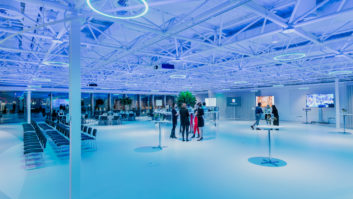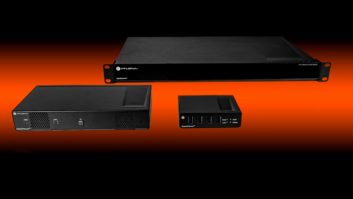
Far from being a buzzword, collaboration has come to define the way we work and, increasingly, the way we learn. In business, working in individual or departmental silos is increasingly frowned upon as it is seen as a barrier to workplace efficiency, while sharing knowledge, experiences and activities – in training rooms or classrooms – is seen as a progressive way to optimise the group learning experience.
In part, this shift in the workplace has been driven by the demands of the digital economy, an environment that demands the rapid flow of data, information and knowledge, in order to act quickly to fast-moving market, customer or competitor developments. Collaboration underpins this dynamic, and both AV and IT have evolved to accommodate it.

Why collaboration is key to workplace and learning
From an IT perspective, we have seen the emergence of the data scientist, while the data itself is no longer for the elite few within an organisation, but disseminated more broadly to all departments – and staff – that need it to do their jobs more effectively. Meanwhile, in both business and education, we have also seen the rise of the BYOD model that sees businesses and students using the laptop, mobile or smartphone of their choice as a work or education device.
With some of its solutions – beyond projectors and interactive touch screens – the AV industry has already engineered products that enable the sharing of content from an individual’s device to projectors, so their content can be discussed by a group in a meeting room, classroom, lecture theatre or huddle space. Not only do those solutions promise to aid collaboration, but they come with the benefit of wireless connectivity – no more hunting around for HDMI cables, or indeed, tripping over them.
A better way to share content and ideas
Until recently though, there have been some limitations to their broader adoption as each user and each room has different requirements – which some solutions weren’t always able to accommodate – while some pricing models have often been prohibitive to large-scale deployment.
A more flexible – and financially viable approach – comes from AV collaboration tools that not only offer a wireless, cable-free and hassle-free way of presenting, but are tailored for the needs of each room or user. For instance, the ability to connect eight students’ devices to a projector, is ideal for the increasingly popular huddle or learning spaces that are outside of the conventional class room.
“I’m optimistic the AV industry has recognised how the workplace and learning environments are changing”
In the business world meanwhile, a similar application can be deployed in any meeting room, boardroom or brainstorm space, enabling meeting participants to instantly connect their device via a WiFi connection and start sharing content immediately once the meeting host assigns them one of the four split screen projection connections. This means contributing digital content onto the projection screen is fast, simple and affordable, while features like on-screen annotation and capture open up a vast array of creative possibilities in any meeting.
Expanding on this AV collaboration concept further, are applications for the boardroom which provide guests with an ad-hoc wireless connection. Some boast a standalone operation and external antenna to provide a robust wireless connection, while preventing guests from accessing the corporate network, thus ensuring that network security is maintained. To further facilitate the employee and guest content sharing experience, some solutions have a USB device that plugs directly into the device to stream content effortlessly to the big screen. The USB device is especially convenient for visiting guests, or when colleagues from other offices are on site. Furthermore, as it is driver-free, no trace or residue is left on laptops after they disconnect.
AV will be at the heart of sharing
Looking at these solutions, it is encouraging to observe the way the AV industry has recognised how the workplace and learning environments are changing. I am optimistic that we will continue to see more innovation from AV manufacturers in order to accommodate how collaboration is increasingly defining how we work and learn.







